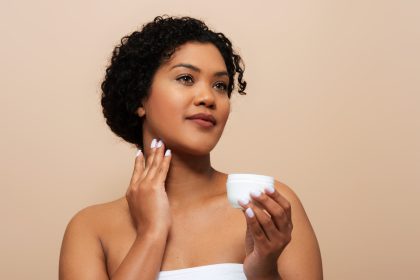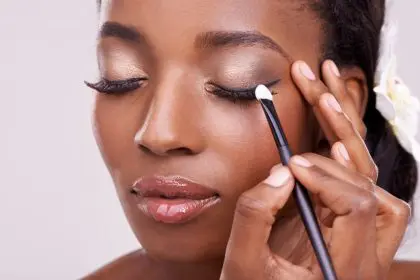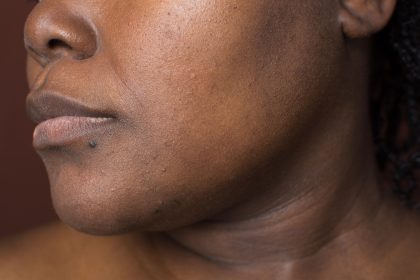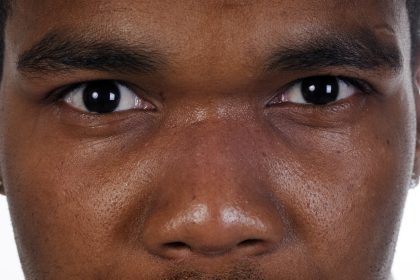Getting eight hours of sleep should theoretically leave you looking refreshed and energized, yet many people wake up with faces that tell a different story. Despite adequate rest, their reflection reveals puffy eyes, dull skin, and an overall appearance of exhaustion that doesn’t match how they actually feel. This disconnect between sleep quantity and facial appearance stems from factors that extend far beyond the bedroom.
The assumption that sleep duration equals facial rejuvenation oversimplifies the complex relationship between rest and appearance. While sleep certainly plays a crucial role in skin repair and cellular regeneration, numerous other elements influence how tired or refreshed your face appears each morning. Understanding these hidden contributors explains why some people look vibrant after six hours while others appear exhausted despite nine hours of rest.
Modern lifestyle factors create unique challenges for facial appearance that previous generations didn’t face. Environmental stressors, dietary patterns, technology use, and even indoor air quality combine to affect how your face processes and displays signs of fatigue. These influences operate independently of sleep patterns, creating persistent tiredness that no amount of additional rest can resolve.
The science behind facial fatigue reveals intricate connections between internal health and external appearance. Blood circulation, lymphatic drainage, hormone balance, and cellular hydration all contribute to whether your face looks rested or worn down. When these systems function suboptimally, facial tissues can’t maintain the plump, bright appearance associated with good health regardless of sleep adequacy.
The dehydration factor most people miss
Chronic mild dehydration affects facial appearance more dramatically than most people realize. Even small deficits in cellular hydration cause skin to lose its natural plumpness and radiance, creating the hollow, tired look that persists despite adequate sleep. This dehydration often stems from sources beyond simple water intake.
Caffeine consumption, particularly in the afternoon and evening, creates diuretic effects that persist into sleep hours. While you rest, your body continues processing caffeine’s dehydrating influence, leaving facial tissues depleted by morning. The timing of caffeine intake matters more than the total amount consumed throughout the day.
Indoor heating and air conditioning systems create environments with extremely low humidity levels, particularly during winter months. Sleeping in these artificially dried atmospheres pulls moisture from skin cells overnight, leaving faces looking parched and tired regardless of how much water was consumed during waking hours.
Alcohol consumption, even moderate amounts, significantly impacts overnight hydration status. The liver’s alcohol processing requires substantial water resources, diverting hydration away from facial tissues during crucial overnight repair periods. This dehydrating effect compounds when alcohol consumption occurs close to bedtime.
Salt intake from processed foods creates retention patterns that affect facial appearance unpredictably. High sodium levels can cause morning puffiness in some people while contributing to dehydration and flatness in others, depending on individual kidney function and hormonal factors.
Hidden sleep quality destroyers
Sleep duration doesn’t guarantee sleep quality, and poor-quality rest fails to provide the cellular repair necessary for refreshed facial appearance. Multiple factors can sabotage sleep quality without affecting total sleep time, leaving faces looking unrested despite spending adequate hours in bed.
Room temperature plays a crucial role in sleep quality that most people underestimate. Environments that are too warm prevent the natural core body temperature drop necessary for deep sleep phases. Without reaching these restorative sleep stages, facial tissues miss critical repair and regeneration periods.
Light pollution from electronic devices, street lights, or digital clocks interferes with natural sleep cycles even when eyes are closed. The brain continues registering light signals through eyelids, preventing complete rest and leaving subtle signs of fatigue visible in facial appearance.
Mattress and pillow quality directly affects sleep positioning and comfort throughout the night. Poor support creates micro-disruptions that prevent truly restorative sleep, while inappropriate pillow height can restrict circulation to facial tissues during rest periods.
Evening meal timing and composition influence sleep quality more than many realize. Late dinners or foods high in sugar and refined carbohydrates create blood sugar fluctuations that disrupt sleep cycles, preventing the deep rest necessary for facial rejuvenation.
Stress hormone levels remain elevated in many people even during sleep, particularly those dealing with chronic work pressure or personal challenges. These elevated cortisol levels prevent complete relaxation and interfere with the cellular repair processes that keep faces looking fresh and rested.
The circulation connection
Facial appearance depends heavily on efficient blood circulation and lymphatic drainage, systems that can become compromised regardless of sleep adequacy. When circulation falters, faces develop the pale, puffy, or drawn appearance associated with fatigue even after restful nights.
Sedentary lifestyles reduce overall circulation efficiency, including blood flow to facial tissues. Hours spent sitting at desks or looking down at devices create posture patterns that restrict circulation to the head and neck, leaving faces looking dull and tired consistently.
Neck and shoulder tension from poor posture or stress physically restricts blood vessels that supply facial tissues. This mechanical compression prevents optimal nutrient delivery and waste removal from facial cells, creating persistent signs of fatigue that sleep alone cannot address.
Cold environments or poor circulation due to underlying health conditions reduce blood flow to facial capillaries. Without adequate circulation, facial tissues can’t maintain their natural color and plumpness, appearing tired regardless of rest quality.
Lymphatic system sluggishness prevents efficient removal of cellular waste products and excess fluid from facial tissues. This backup creates puffiness and dullness that makes faces appear fatigued even when the person feels energetic and well-rested.
Nutritional deficiencies showing up in your face
Specific nutrient deficiencies manifest as facial fatigue long before other symptoms become apparent. The face serves as an early warning system for nutritional imbalances that affect energy production and cellular function throughout the body.
Iron deficiency creates characteristic pale, tired-looking skin even in early stages before anemia develops. Facial tissues require adequate iron for optimal oxygen transport and cellular energy production. Without sufficient iron, faces develop a wan, exhausted appearance that no amount of sleep can improve.
B-vitamin deficiencies, particularly B12 and folate, affect cellular energy production and nervous system function in ways that show clearly in facial appearance. These deficiencies create a drawn, stressed look around the eyes and mouth that persists despite adequate rest.
Vitamin D insufficiency affects mood regulation and cellular function throughout the body, including facial tissues. Low vitamin D levels contribute to a lackluster complexion and tired expression that doesn’t respond to increased sleep duration.
Essential fatty acid deficiencies leave skin looking dry, flat, and lifeless. Without adequate omega-3 and omega-6 fatty acids, facial skin loses its natural plumpness and radiance, appearing consistently fatigued regardless of sleep quality.
Protein inadequacy affects collagen production and cellular repair processes that maintain facial structure and appearance. Insufficient protein intake leaves faces looking saggy and tired as supportive tissues weaken over time.
Environmental factors stealing your glow
Modern environments expose faces to numerous stressors that create persistent signs of fatigue independent of sleep patterns. These environmental challenges require specific countermeasures beyond simply getting more rest.
Air pollution creates oxidative stress that damages facial skin cells and impairs their natural repair processes. Even indoor air quality issues from dust, cleaning chemicals, or poor ventilation contribute to facial fatigue that sleep cannot resolve.
Blue light exposure from screens affects not only sleep quality but also facial skin directly. Extended screen time creates a tired, strained appearance around the eyes that persists even after adequate rest. The combination of eye strain and blue light exposure creates lasting facial fatigue.
Seasonal changes affect facial appearance through multiple mechanisms including humidity levels, temperature fluctuations, and reduced sunlight exposure. Winter months particularly challenge facial vitality through dry air and limited natural light.
Chemical exposure from skincare products, makeup, or household cleaners can create subtle inflammatory responses that leave faces looking tired and irritated. These reactions often develop gradually, making the connection to facial fatigue less obvious.
Electromagnetic field exposure from wireless devices and electronic equipment may contribute to cellular stress that affects facial appearance. While research continues exploring these connections, reducing exposure represents a simple intervention for persistent facial fatigue.
Hormonal influences on facial appearance
Hormonal fluctuations create predictable changes in facial appearance that often coincide with feelings of fatigue, creating the impression that tiredness is sleep-related when it’s actually hormonal.
Cortisol patterns throughout the day significantly affect facial appearance. People with disrupted cortisol rhythms often experience morning facial puffiness or afternoon facial fatigue that doesn’t correlate with sleep quantity or quality.
Thyroid function directly impacts skin texture, color, and overall facial vitality. Even subtle thyroid imbalances can create persistent facial fatigue that no amount of sleep improvement can address.
Sex hormone fluctuations during menstrual cycles, menopause, or andropause create predictable changes in facial appearance including water retention, skin texture changes, and overall vitality that affects how tired faces appear.
Insulin resistance and blood sugar imbalances affect facial appearance through multiple pathways including inflammation, circulation changes, and cellular energy production. These metabolic issues create facial fatigue that persists regardless of sleep adequacy.
Growth hormone production, which peaks during deep sleep, affects facial tissue repair and regeneration. However, stress, poor nutrition, and other factors can impair growth hormone effectiveness even when production remains normal.
Skincare mistakes that worsen facial fatigue
Well-intentioned skincare routines sometimes contribute to facial fatigue through ingredient reactions, improper techniques, or product combinations that irritate rather than rejuvenate facial tissues.
Over-cleansing strips natural oils from facial skin, leaving it looking flat and tired. The skin’s natural barrier function becomes compromised, creating a dull appearance that makes faces look consistently fatigued regardless of sleep quality.
Wrong product formulations for individual skin types can create subtle inflammatory responses that manifest as facial tiredness. Products that work well for others may leave certain skin types looking irritated and worn down.
Aggressive exfoliation damages the skin’s protective barrier and creates micro-inflammation that leaves faces looking red, irritated, and tired. The pursuit of glowing skin through over-exfoliation often produces the opposite effect.
Ingredient layering without proper understanding of chemical interactions can create reactions that leave skin looking stressed and fatigued. Certain combinations neutralize beneficial effects or create irritation that affects facial appearance.
Inconsistent skincare routines prevent skin from adapting to beneficial ingredients and maintaining optimal function. Faces need consistent, appropriate care to maintain their natural vitality and avoid the tired appearance that comes from neglected or confused skin barriers.
Solutions that actually work
Addressing facial fatigue requires targeting the underlying causes rather than simply increasing sleep duration. Effective solutions focus on supporting the multiple systems that influence facial appearance.
Hydration strategies extend beyond drinking more water to include timing, quality, and retention factors. Consuming adequate fluids earlier in the day, choosing mineral-rich water sources, and supporting cellular hydration through appropriate electrolyte balance creates lasting improvements in facial appearance.
Circulation enhancement through gentle facial massage, appropriate exercise, and posture correction helps restore blood flow and lymphatic drainage necessary for vital-looking skin. These interventions often produce immediate improvements in facial appearance.
Nutritional optimization through targeted supplementation and dietary improvements addresses deficiencies that manifest as facial fatigue. Working with qualified practitioners to identify and correct specific imbalances creates sustainable improvements in facial vitality.
Environmental modifications including air quality improvement, blue light reduction, and toxin minimization reduce the external stressors that contribute to persistent facial fatigue. These changes often produce noticeable improvements within weeks.
Stress management techniques that actually lower cortisol levels and improve overall physiological function help restore the hormonal balance necessary for refreshed facial appearance. Effective stress reduction creates improvements that extend far beyond facial aesthetics.
The solution to persistent facial fatigue lies not in sleeping more but in addressing the complex web of factors that influence how your face processes and displays signs of vitality. Understanding these connections empowers you to make targeted changes that restore your natural radiance regardless of your sleep schedule.

















